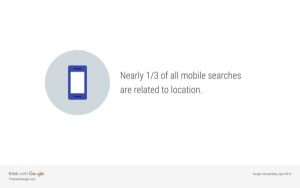I often think about the Maggie Smith line in Downton Abbey “What is a weekend?” Being a Countess, she didn’t know what a weekend was because she had no workweek. But there was a time in the not so distant past when working Americans also had never heard of a weekend for the opposite reason: They often worked six or seven days a week.
In the early 1900s, Henry Ford began to give factory workers a two-day weekend, a practice that was unheard of at the time. Then, in 1938, a provision of the Fair Labor Standards Act mandated a maximum 40-hour workweek went into effect, and the five-day workweek and two-day weekend was adopted nationwide.
The two weren’t directly correlated, but it’s one of many examples of a private company leading on a national policy change (see also: the many companies that adopted benefits for LGBTQ employees years before marriage equity was passed nationally, and the companies that are leading on paid parental leave policies today).
Recently automakers including Ford, could have had the opportunity to lead the country in remaking the workweek again. While the United Auto Workers won big in contract negotiations, especially with regard to pay, one early demand got left on the cutting room floor that would have been truly transformative: a 32-hour workweek.
The changing workweek
The tide has been turning in the direction of a shorter workweek for several years. We’ve covered many companies that have experimented with or adopted a four-day workweek. Some companies have employees work extra hours Monday through Thursday in order to have Friday off. But most understand that cramming 40 hours into four days is a recipe for burnout that negates the benefits of having an extra day off.
Since the pandemic changed how and where work gets done, more companies are considering shortening the workweek as a recruiting tool, to increase employee morale, and to reduce burnout. While many individual companies have experimented with or implemented four-day workweeks in the past few years, a lot of attention was given this year to the biggest four-day workweek pilot program of 70 companies and 3,300 workers in the UK.
The success of that UK experiment, coupled with the growing drumbeat in the U.S. led California Representative Mark Takano to reintroduce a bill in March that would make the 32-hour workweek a national standard and lower the threshold triggering overtime compensation for most employees. His proposal aims to amend the Fair Labor Standards Act to make the 32-hour workweek a national standard, but many have highlighted the four-day workweek as the preferred model. I’m not so sure it’s the best solution.
Here’s why I think we should move toward working five six-hour days instead.
A three-day weekend every week?
Who doesn’t love a three-day weekend? A eight-hour, four-day workweek with Fridays off would be great for a lot of employees for a lot of reasons, and companies should adopt it if that’s what works best for their business. But as a point of national policy, I think a four-day workweek sounds like too radical a change to win wide support. It’s a big shift to how we think of the traditional workweek.
Granted, we’ve made big shifts before, but a national four-day workweek would mean a lot of logistical challenges for businesses. For instance: Will your customer service shut down for three days a week? Would doctor’s offices be closed three days a week? Will businesses just end up hiring more employees to work that extra day? It’s doable, and for some companies and industries might be preferable, but it might be more inconvenient at first and therefore face more resistance.
Instead we should first look at reducing the number of working hours each day. Already Americans are working an average of 200 hours more each year than employees in most of the rest of the world. Much of the way we work today is a byproduct of the industrial revolution some 200 years ago.
Working eight hours a day doesn’t have a scientific backing. It’s a remnant of an 18th-century norm for running factories most efficiently. In fact, there has been quite a bit of research that has pointed to the health issues associated with sitting for eight hours or more a day, calling it as bad for health as smoking. Further, it’s been well-proven that people can’t focus their attention for periods longer than 25 minutes at a time, after which there are diminishing returns on each hour spent in front of your computer. Employees who feel obligated to put in eight hours or more of “face time” a day to prove they are being productive often end up doing fake work or performing productivity.
Statistics on this vary, but it’s estimated that the average employee across all industries is productive for 60% or less each day. For those with white collar jobs, it’s even less. Some research found that the average office worker is only productive for two hours and 23 minutes each day. That’s over five hours of fake work and wasted time every day.
A winning solution for other aspects of work life balance
A five day, 32-hour workweek versus a four-day workweek might sound like virtually the same thing, but the former has the potential to ease some of the other burdens of our current work structure, too. Most importantly, it would help us address the misalignment between the school day and the typical workday. Schools in the U.S. generally end between 2 p.m. and 4 p.m., while 70% of working parents’ days don’t end until 5 p.m. or 6 p.m. For parents of elementary school-aged kids especially, this leaves a childcare gap that has gotten more costly and difficult to fill in the wake of the pandemic era childcare crisis.
But like paid leave, a switch to a six-hour workday and a 32-hour workweek wouldn’t just benefit working parents. Everyone would benefit from more hours of free time in their days for both their mental and physical health. Consider sleep: A third of Americans don’t get enough sleep, which can lead to poor health outcomes and less mental agility.
Technology’s promise for the future of work
The catalyst behind why UAW initially included a proposed 32-hour workweek in their contract was the belief that advances in automation would reduce employees workload. This has long been the promise of AI and automation—that it would free us all up to do less work.
You’ve likely heard of economist John Maynard Keynes’s 1930 prediction that within 100 years—so by 2030—we would only be working 15 hours a week. There are a lot of reasons why that prediction was way off base (and it’s believed that Keynes himself literally worked himself to death by putting in too many long hours). But while a 15-hour workweek isn’t likely to happen anytime soon, a 32-hour workweek is an incremental but significant solution to a lot of the burnout and dissatisfaction that employers have been trying and failing to solve in the past few years.
(6)









